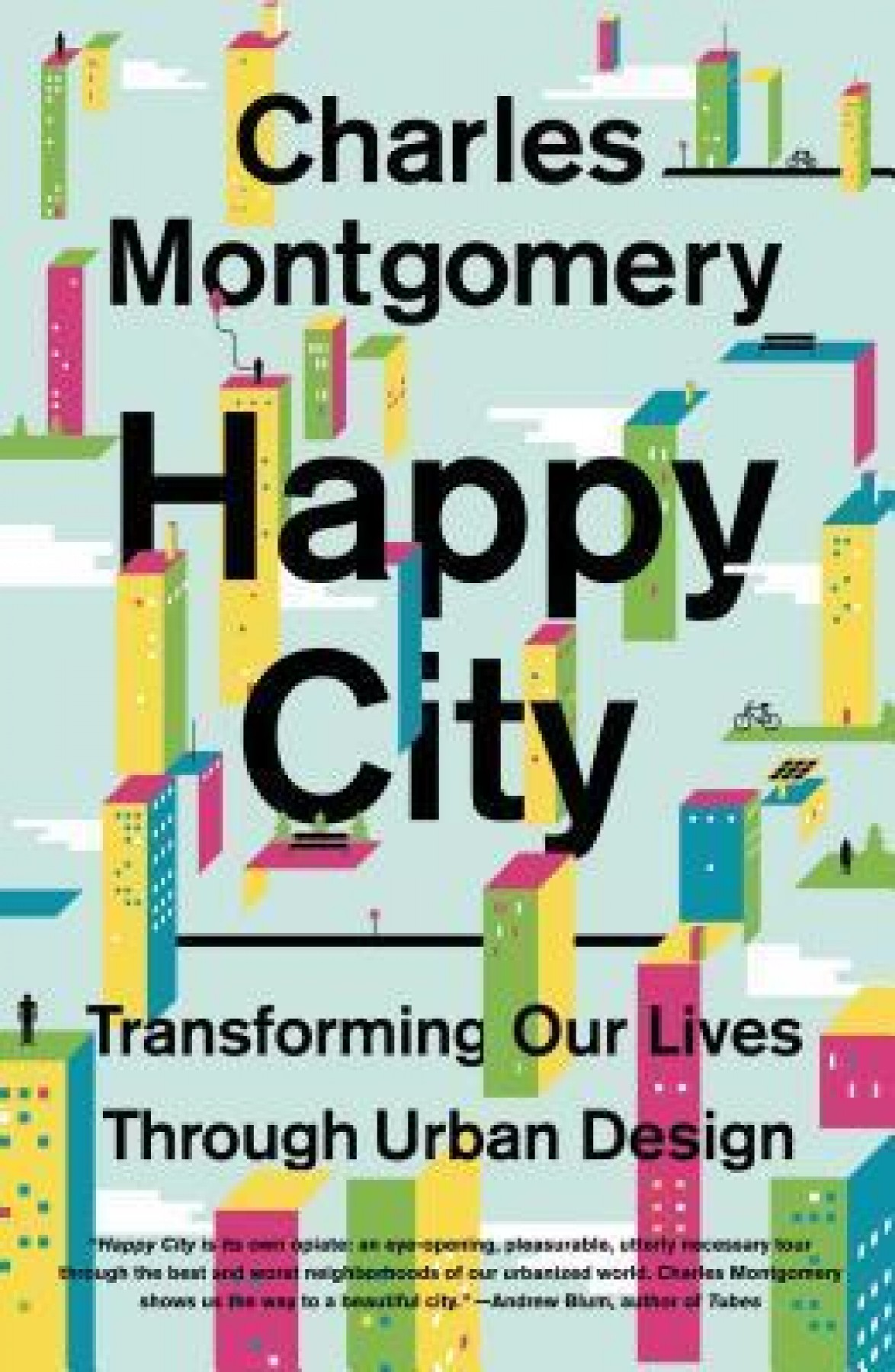Can cities be engines of happiness and not just for the convenience of commerce? What if designers and policy-makers focused their outcomes on achieving the wellbeing of the people who live, work and play in their cities?
These are the big questions that Charles Montgomery wrestles with in Happy City. He wades into the plethora of evidence on the social and structural determinants of health as well as the health outcomes of happiness to comprehensively construct the case for a new approach to urban design and planning.
Flawed urban design
Montgomery systematically critiques a century of flawed urban design theory through the use of evidence. Cities have been planned and designed since the first half of the 20th century for the convenience of cars, not people. Montgomery piles up the evidence of how this has led to not only the ill-health of populations and the environment, but also the economic wellbeing of cities.
Happy City provides a blueprint for building, shaping and even retro-fitting cities based on human wellbeing that stems from equitable and just distribution of, and access to, resources, amenities and public space. It emphasises the goal of increasing social connectedness and participation – key ingredients of ‘happiness’ or mental wellbeing.
Christchurch earthquakes
In 2015, he was invited to visit Christchurch to share his knowledge towards the rebuild of the city following the disastrous earthquakes of 2010—11. Ahead of his public address hosted by civic leaders, the All Right? campaign hosted a community-led forum where Montgomery was a guest and invited to listen to six key community leaders and their views on what makes a city happy.
Happy City offers a recipe, aligned with evidence and seasoned with a dash of hope, for combining the ingredients of happiness to create a wellbeing-focused, socially just, prosperous and environmentally harmonious city of the people.
Reviewed by Ciaran Fox, Programme Design and Delivery Specialist at the Mental Health Foundation

